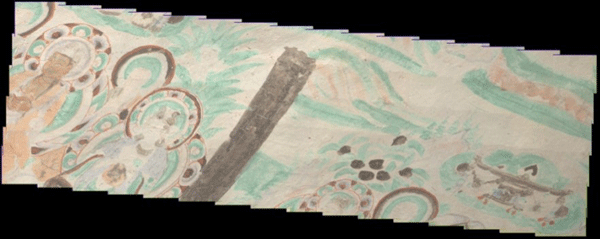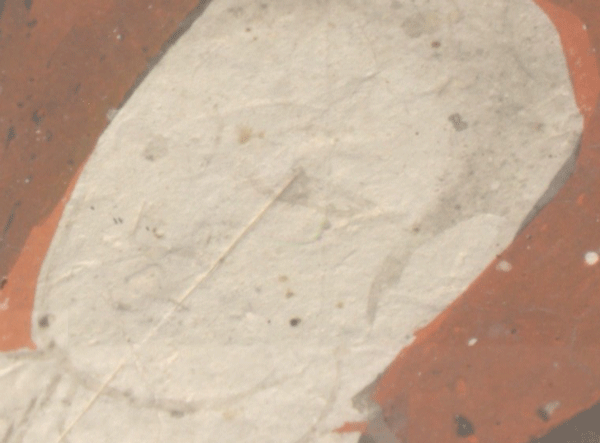Scientists with Nottingham Trent University (Nottingham, United Kingdom) and consultants with global infrastructure company Opus International Consultants (Wellington, New Zealand) are working together on a project to detect the level of rust and corrosion on metal structures from up to 100 m away.
The project could save millions per year in surveying costs, officials say, while also removing the need for potentially dangerous inspections.
“There is currently no technology that combines 3D and spectral imaging in one instrument in this way,” says Haida Liang, a professor at Nottingham Trent University and head of the school’s imaging and sensing for the archaeology, art history, and conservation research groups.
The £500,000 project is being jointly funded by Innovate UK—the government-funded innovation arm of the United Kingdom—and Opus International Consultants. It is part of the U.K. government’s Knowledge Transfer Partnership (KTP) program, which links businesses with a university and graduate to work on a specific innovation project.
The formal goal of the project is to help inform decisions about when to repair or decommission structures such as bridges, footbridges, pylons, culverts, station canopies, roof structures, and tunnel linings.
Technology Originates from Painting Detection
The project builds on previous research by Nottingham Trent University, which resulted in the development of a remote spectral imaging system for the examination of large-scale wall paintings (Figure 1). That system reveals the composition and degradation of paints used in paintings, as well as hidden details that are not visible to the naked eye, according to Liang.

Red ochre, a natural earth pigment used to make paint, is made up of the same chemical ingredient as rust—iron oxide (Fe2O3). Because of this, researchers believed the system could also work to detect rust and corrosion.
“It is fascinating to see that an instrument previously funded for the protection and understanding of historic wall paintings will now make an impact on this industry,” Liang says.
Three-Year Project
The three-year project involves the creation of a remote imaging system, which simultaneously performs both three-dimensional (3-D) and spectral imaging, and provides important information about the physical and chemical characteristics of the structure.
The RustScan† instrument and accompanying RustDetect† software—which can be used via hand-held or tripod-mounted cameras or even drones—are able to generate detailed data regarding surface blistering, rust, and corrosion (Figure 2).

“Remote, simultaneous 3D and spectral imaging can provide direct identification of surface rust and corrosion,” Liang says. “The technology will also be able to provide a time-specific record of the condition of the bridge for future comparison with later scans, in addition to assisting in the development of an appropriate maintenance program for the bridge.”
The information will help build a 3-D model of the structure’s condition, which can then be used to identify areas requiring immediate attention, maintenance programs, and lifespan modeling.
Bridges Seen as Prime Target
In the United Kingdom, many bridges date back to the 19th century and require careful management. Additionally, the surveying and monitoring of bridges can be particularly laborious, with inspections frequently requiring inspectors to scale or access hard-to-reach places.
That process can be time-consuming, expensive, and dangerous. But with the new technology, much of that arduous process can be eliminated.
“The surveying of bridges is currently an extremely laborious process, and much of it is carried out manually,” says James Hulme, a member of the U.K. leadership team at Opus International Consultants. “We need technology that circumvents the need for people putting themselves in these potentially dangerous positions.”
At Opus, the research is part of the company’s initiative to work with technical and academic experts.
“We are extremely excited about this new work, which could provide a major industry impact for years to come,” Hulme says. “Our clients continually look to us for planning, design, maintenance, and management of structures such as bridges, viaducts, and pylons.”
In addition, Opus says the enhanced technology could mitigate budget concerns in the industry by extending the lifecycle of existing infrastructure and reducing the need for expensive and potentially brand-new structures.
“Industry is keen to make more of what already exists, rather than keep building new structures, which can impact upon the environment, health, safety, and budgets,” Hulme says. “We are always looking for new technologies which offer cost-effective solutions to safely defer expensive upgrades or replacements that may not actually be required.”
Next Steps
While the scanning instrument is only currently available for wall paintings, the process to commercialize the instrument for metal structures is nearing its conclusion. Nottingham Trent University and OPUS plan to release the specific test results of their work on steel structures in the fall of 2016.
“The new project with OPUS will help us commercialize it for the survey industry,” Liang says.
“The tools will have widespread application for all structures where metal is an integral part of their construction, particularly where safety is paramount and failure would be catastrophic,” the school adds.
†Trade name.